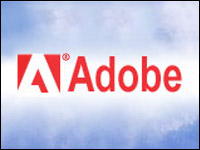
What would you do if 100 people visited your website tomorrow and each wanted a different variety of your company’s solution? Would you take that information and develop 100 new and unique brochures? No, that would be cost- and time-prohibitive.
Now imagine that you can track where website visitors originate, track their clicks through your site, and assemble in real-time a set of content that responds to their needs well enough to satisfy their information requirements. That’s the value of Marketing Asset Management (MAM) in a world of multichannel marketing.
While many companies are leveraging MAM for just that sort of marketing today, many are also deriving tremendous benefits from MAM in more traditional marketing areas that range from reducing spending with third-party agencies to improving response times for sales people in urgent need.
Yet, according to the Gleanster benchmark report on Marketing Asset Management (currently available for free download), MAM solutions are used by only 45 percent of Top Performers. That’s because many companies still rely on a wide variety of workaround tools and capabilities to accomplish their goals around localized marketing efforts.
Following are seven reasons large companies with distributed marketing needs should consider adopting a MAM solution.
1. Increase Marketing Relevance and Personalization
Customers today have more power and influence than at any other time in history. They also have more channels where they can experience a company’s brand and discuss their feelings about that brand. This makes relevance and personalization critical to capturing mindshare and share of wallet.
Top performers are looking for ways to make marketing messages timely and personalized for local audiences, while simultaneously maintaining brand consistency at a corporate level.
2. Provide More Autonomy and Control Over Local Markets
In distributed marketing environments, corporate marketing and local marketers often clash. Corporate marketing is tasked with maintaining brand consistency and brand standards, while local marketers need autonomy to meet the unique needs of local target audiences.
Top Performers are three times more likely to use a digital marketing tool that provides dynamic template capabilities. This enables corporate marketing to create marketing templates with some elements that are locked (for brand consistency) and other elements that can be customized by local marketers.
3. Improve Marketing Cycle Time
The explosion of social media and near-instantaneous information flows mean that consumer dynamics can change rapidly in today’s market. The companies that can react quickly and appropriately stand out among competitors.
Inefficient or manual digital asset management processes make it nearly impossible to react in a timely manner.
4. Improve Marketing Efficiency and Productivity
Searchable access to content allows marketers to not just find what they are looking for, but to locate assets that can be re-used and repurposed. This reduces the purchase of redundant assets and can save millions toward bottom-line profitability.
Think about how much time is wasted by marketing teams if they are constantly looking for assets, emailing colleagues, and waiting for lengthy workflow approval processes. It impacts employee satisfaction, and the lack of empowerment contributes to a continuous cycle of waste.
5. Increase Brand Compliance
In a global digitally connected world, brand compliance mistakes become instantly visible and often spread like wildfire throughout social realms.
Top Performers were not as likely as Everyone Else to identify brand compliance as a reason to implement — it’s simply a byproduct of implementing a solution.
6. Measure Asset Utilization and Effectiveness
Off-the-shelf asset utilization statistics can help an organization identify those assets that have the largest impact on marketing effectiveness.
In a B2B environment, for example, allowing Sales to rank and rate marketing assets helps sales people to immediately identify the most useful assets, and it helps marketers to identify the marketing messages that resonate with target audiences.
7. Reduce or Optimize Content Production Costs
The variance between Top Performers and all other respondents in Gleanster’s research suggests that most organizations perceive content production costs as a top reason to implement marketing asset management solutions.
The reality is that optimization of the marketing value chain is not a byproduct of the features and functions in a tool, but rather a conscious effort on the part of the organization.
In Search of the Winning Combination
As companies expand regionally and globally, marketing organizations will continue to face the challenge of delivering the right marketing messages to specific local markets while maintaining their corporate brand and identity. Again, for most companies, this has led to unique challenges between Corporate Marketing and Local Marketing.
Corporate Marketing is charged with acting as the branding police, constantly chasing down rogue local marketers who seek to customize sales tools and messaging to support the needs of local sales teams. These manual and inefficient processes plague the marketing function, draining productivity and bottom-line profitability.
Today’s customers access companies in many ways, and managing creative and messaging across multichannel marketing has become more complex than ever before. The explosion of social media, mobile applications, and multichannel customer experiences is forcing companies to address these “glocal” challenges.
Fortunately, marketing asset management solutions from leading technology vendors like Saepio, Longwood Software (RevBase) and Neolane, designed specifically for marketers, come equipped with the specialized features and functionality that are needed to fully address these localized marketing challenges.
Only now, it seems, are more companies coming to understand the full extent of the related benefits of Marketing Asset Management and how the technology can be utilized to their advantage.













































